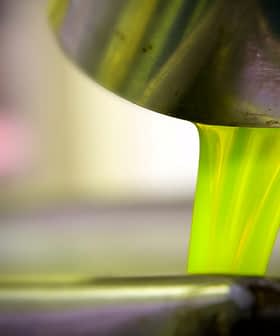What appears to be a new, cheap and fast way to detect insecticide residues in olive oil is the focus of joint research by French and Moroccan scientists.
Agrochemical residues remain highly toxic and compromise the quality of olive oil
They say biosensors they have developed show promise as a more efficient way to detect organophosphate pesticides commonly used on olive trees, particularly malathion, dimethoate and methidathion.
Chromatography has traditionally been used for pesticide analysis in laboratories. It is reliable and precise but also time consuming and requires expensive instrumentation and highly-trained staff, the researchers say in a research article to be published in April in the peer-reviewed Food Control journal.
Meanwhile biosensors — using a living organism or biological molecules such as enzymes to detect the presence of chemicals — have been developed for pesticide detection and are generally low-cost, compact and simple in design.
The electric eel plays a part
Led by Prof. Thierry Noguer, the team of researchers from the Universities of Perpignan in France and of Ibn Zohr in Morocco is evaluating the use of amperometric biosensors, which can detect pesticides via changes in electric current. Specifically, they are using an enzyme from electric eels — acetylcholinesterase (AChE) – which is entrapped using a method known as the sol-gel process.
In their paper, “Sol-gel immobilization of acetylcholinesterase for the determination of organophosphate pesticides in olive oil with biosensors”, they said that they tested the viability of the method on the detection of insecticides from extra virgin olive oil spiked with known quantities of the oxidized forms of malathion, dimethoate and methidathion.
They had checked no other insecticide was already in the olive oil, which was organic and bought in a supermarket.
The analysis of the spiked olive oil samples achieved nearly 100 percent recovery of insecticides from the spiked samples and showed a good correlation with results obtained via conventional methods, they wrote, concluding that “a cheap, fast and simple amperometric biosensor” had been developed.
“The limits of detection of the developed devices were very compatible with the maximum residue limit tolerated by international regulations” they wrote.
Why detection is important
Insecticides, mainly organophosphates, are widely used on olive trees to control fruit fly, the researchers said in the paper‘s introduction.
“These chemicals allow crop protection of olive trees, however their residues detected in the oil and fruits are a major risk for consumer health.”
“Therefore, both the European Union and the Codex Alimentarius Commission…have established maximum pesticide residue limits (MRLs) for olives and olive oil.”
In another paper, they said that while agrochemicals improve olive yield, “they still remain highly toxic and compromise the quality of olive oil.”
“The majority of these pesticides are lipophilic and are able to remain in the oil for extended periods of time.”
“Regular monitoring and detection of these chemicals are essential for consumer protection” they wrote.
But Noguer told Olive Oil Times the group‘s aim was not to evaluate the quality of olive oils, rather to provide tools for checking them.
“However…we did not find pesticides in concentrations higher than the MRLs in the tested samples” he said.
About fifty cents per test
Asked if the biosensors had disadvantages, he said that generally it was their relative instability, due to the use of a biological element — an enzyme — which made frequent change of the electrode necessary.
“However this relative drawback is balanced by the very low cost of the measurement” he said.
The estimated cost of one test using a biosensor is about €0.50, which factors in fabrication of the biosensor and the analysis. But they are not yet on sale.
“A start-up company is being created to develop some of our biosensors. The main barrier to their development is the lack of market. The only widely used biosensor is the one for glucose, used by millions of diabetic people.”
Future work
The group is now developing biosensors using new polymers — instead of the eel enzyme AChE — for the detection of other insecticides used on olive trees.
“We hope these devices will be better adapted to wide utilization by non-qualified end users and will be finally authorized as control tools by regulating authorities” Noguer said.
Funding
The research fell within the frame of the bilateral Hubert Curien Volubilis Programme (France-Morocco) “Association biocapteur-matériaux à empreinte moléculaire pour la détection des insecticides utilisés sur l’olivier”. It was co-financed by the IMAGES laboratory at the University of Perpignan Via Domitia.
Team members
University of Perpignan Via Domitia, France (IMAGES laboratory): Thierry Noguer, Professor; Régis Rouillon, Professor, University Institute of Technology of Perpignan; Georges Istamboulié, PhD
University Ibn Zohr, Agadir (Morocco): Ihya Ait-Ichou, Professor; Elhabib Ait-Addi, Professor
PhD Students (co-tutelle): Najwa Ben Oujji; Idriss Bakas








